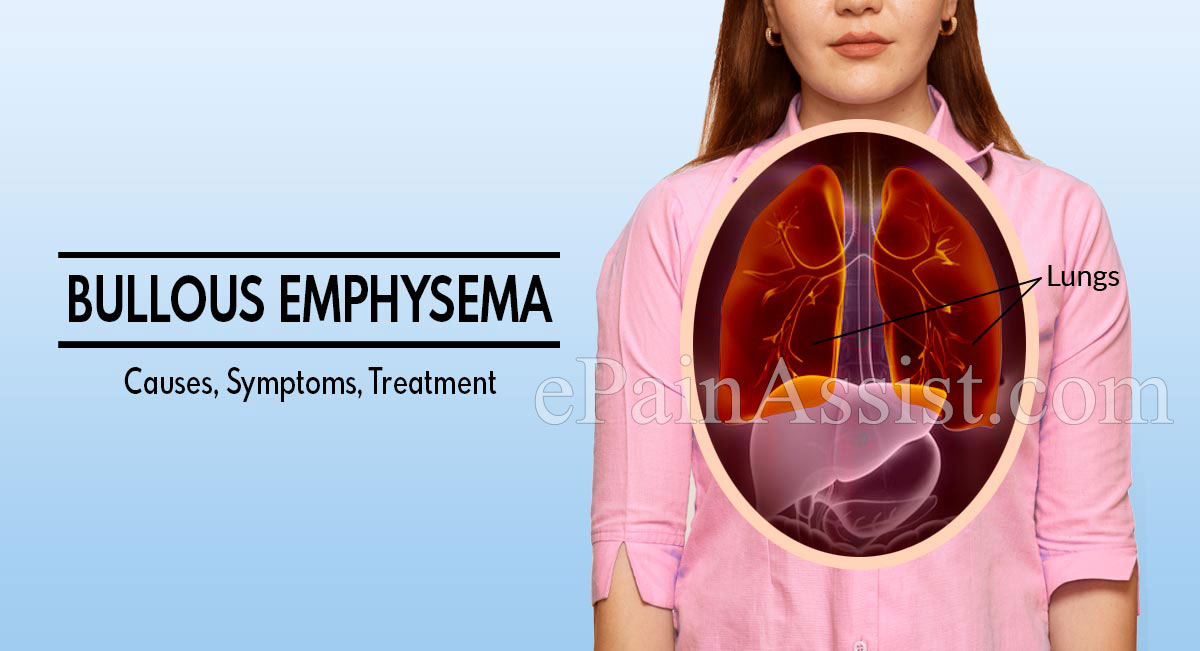What is Bullous Emphysema?
Lungs consist of many tiny sacs called alveoli. These help in exchanging gas when a person is breathing. Emphysema is a condition, a type of chronic obstructive pulmonary disease, in which there is damage to the alveoli, which in turn destroys the lungs. Bullous emphysema is the damage to the lungs that result from damaged alveoli that descend from the large air spaces, especially from the upmost area of the lungs. Bullous emphysema occurs either in one or both the lungs. Bullae can restrict the expansion of the lungs and lead to breathing difficulty in both organs.

Causes of Bullous Emphysema
Smoking and alpha 1 antitrypsin deficiency are the two main causes of bullous emphysema.(1) Other conditions that can lead to the development of bullae in the lungs include:
Bullous emphysema is a serious condition as it may lead to permanent damage to the lungs. The enlarged spaces get less efficient in exchanging oxygen and carbon dioxide.(2) This reduces the oxygen availability to the rest of the body.
Bullous emphysema is known to affect 12% of adults over the age of 30 years worldwide and is ranked third in the cause of death in the United States.(1)
Symptoms of Bullous Emphysema
A person with bullous emphysema may have small or large bullae with measurements up to 20 cm. The symptoms include:
- Chest pressure
- Difficulty in breathing
- Shortness of breath
- Bloated feeling
- Fatigue
- Soreness of chest
People with bullous emphysema have more possibility of developing pneumothorax or collapsed lung. It can be a life-threatening condition in people with already compromised lung function.
Diagnosis of Bullous Emphysema
There are various diagnostic tests that can help in detecting bullous emphysema, these include:
- X-ray: It is a simple non-detailed image of lungs and is performed initially while evaluating lung diseases. It can detect general bullae features including large bullae and also helps in knowing the bullae location, i.e. the upper and the lower lung.
- CT Scan: This test is more specific than an X-ray while detecting emphysema. A CT scan is suggested if the symptoms suggest COPD complications, there is an alternate diagnosis to a lung condition, or when there is a lung cancer indication. A CT scan can help determine whether emphysema is bullous, centriacinar, panaciner or paraseptal.
- Pulmonary Function Test: This test is ordered to know how well the lungs are working. This test measures the lung capacity, gas exchange, lung volume, and rate of flow.
All the tests can help a doctor in determining and treating specific lung disorders.
Treatment of Bullous Emphysema
Medications prescribed are the ones that can be inhaled as they work well for the symptoms of chronic obstructive pulmonary disease. They work by dilating the airway to help airflow in and out of the lungs, address inflammation, and ease shortness of breath.
If the oxygen saturation drop, the person is given oxygen therapy.
Surgery is recommended when the bullae are large and there are complications such as pneumothorax, hemoptysis, or infection. It involves removing the entire bullae and it is known as bullectomy. There may also be the removal of a portion of the tissue that is affected by emphysema and this is known as lung volume reduction surgery. This procedure helps in making breathing easy when there is damage to the lungs from COPD. Bronchoscopic lung volume reduction is also recommended, which is a minimally-invasive procedure for severe symptoms.
The outlook for bullous emphysema depends on the management of the underlying disease and possible intervention for bulla in the lung. Stopping smoking slows down the progression of symptoms. If a person has giant bulla, surgery is recommended to remove it. A doctor can be consulted for an appropriate diagnosis and treatment option and necessary interventions.
